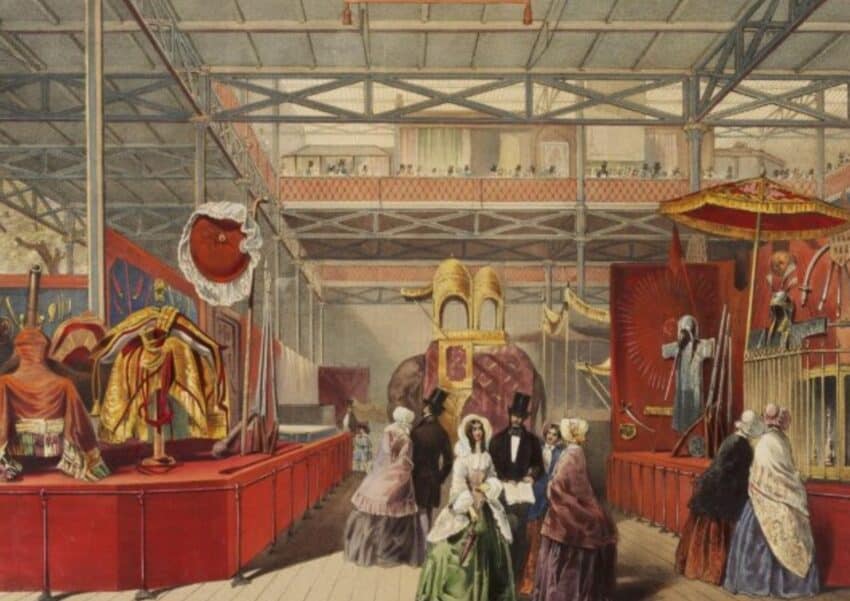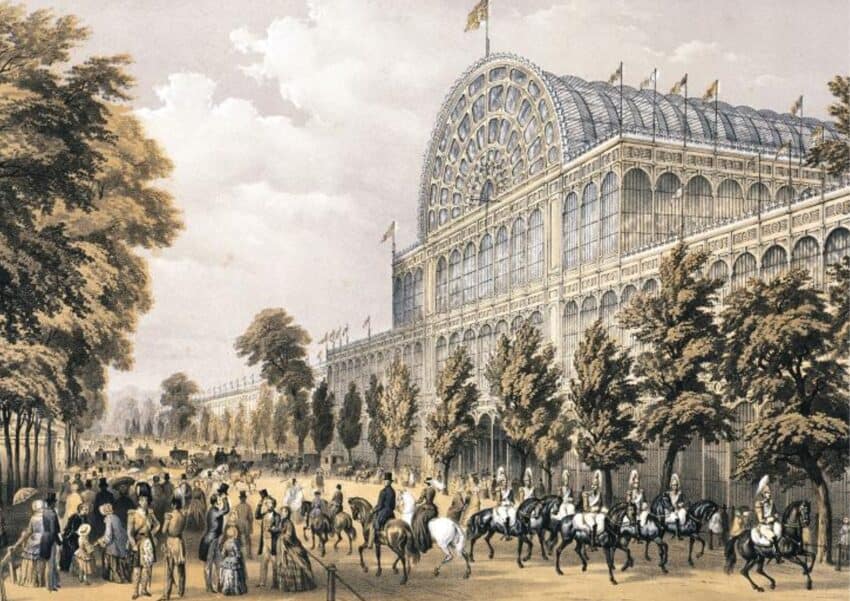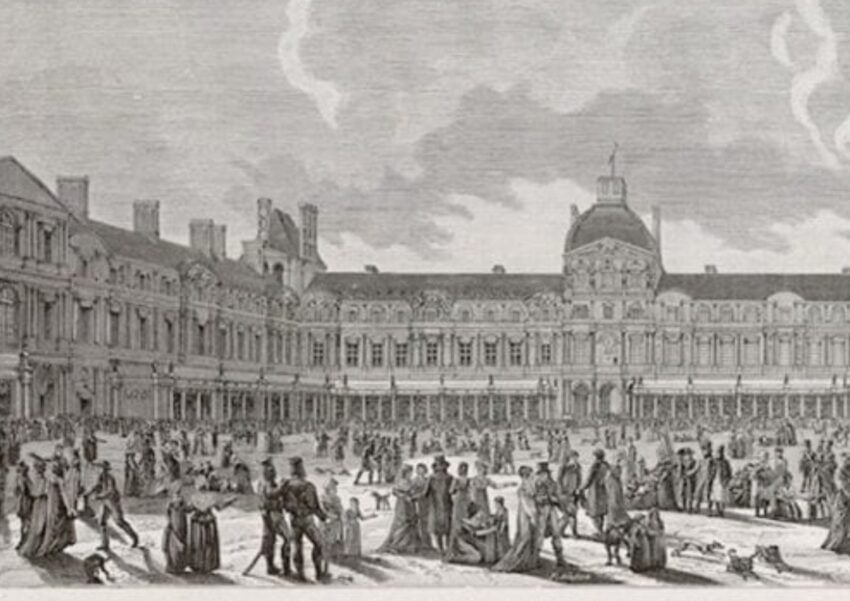From ancient market stalls to today’s shiny and sophisticated stands, the world of exhibitions has always played a fundamental role in human civilisation. It addresses the basic human need to gather, connect, share our ideas, and ultimately, highlight our curiosity and innovation. Whether you refer to them as exhibitions, expos, trade fairs or trade shows, they provide the space that we as humanity need to meet, share and evolve. The main question we will answer is: “How did we get from ancient open-air markets to those glossy, lit-up global exhibitions”?

The ’First’ Exhibitions
The first concept of what we would now consider an exhibition can be traced back thousands of years, when ancient civilisations held their local get-togethers in order to exchange goods and services. These marketplaces were more than just the swapping of basic necessities; they were third spaces where people could socialise with one another and share the knowledge and inventions they had come up with to make their lives and overall community better. Although rather basic in their ‘stand’ designs of hand-crafted wooden tables, woven baskets and hand-painted signs, they were able to attract the attention of passersby and share with them the value of their products, just like we intend to do today at modern exhibitions.

The Middle Ages
The Middle Ages saw the first significant growth in Europe of human society. And as humanity grew, so did our need to share and trade. In order to facilitate this, rulers and the newly established trade guilds of the time would organise big events within their towns and cities to attract people from far and wide to come together and collaborate. With the growth in these markets, so came the growth in their ‘exhibition’ stands, changing from simple tables to more solid wooden structures, woven fabrics and branded signage to clearly indicate each stall’s specific trade. These events played a significant role in the spread of new products, technologies and ideas.
The Great Exhibition of 1851
After the expansion of trade routes through Europe and the growth in industry over the next several centuries, there needed to be an event that brought all of that together. This came to fruition in Victorian England when Prince Albert organised what is now considered to be the first modern international exhibition: The Great Exhibition of 1851, also known as the Exhibition of the Works of Industry of All Nations. It was held in the famous Crystal Palace, specifically built for the event. The Great Exhibition was opened by Queen Victoria herself and saw over 6 million visitors in its 5-month run. It showcased new industrial designs, scientific achievements, and creations from across the globe, redefining what exhibitions could essentially be. It attracted numerous inventors, investors and spectators from all over the world, setting the foundations for the modern international trade fairs we see today.
The Industrial Revolutions
With the increased economic growth after the Industrial Revolution, exhibitions became crucial for showcasing progress and innovation. Businesses sought platforms to share their breakthroughs and inventions with society, while the public wanted to see the future. This created a metaphorical ‘boom’ in the exhibition world.
Some key moments in exhibition history during this time period include:
- 1886 – The first exhibition was held at Olympia, London.
- 1889 – Paris World Expo featured over 60,000 exhibitors and led to the creation of the Eiffel Tower.
- 1947 – The Hannover Export Fair, which focused on rebuilding Germany’s economy after the war and generated over £23.5 million in signed business deals.
- 1976 – Opening of The NEC Birmingham, the largest exhibition venue in the UK.
- 2000 – Launch of ExCeL London, a modern venue for major international events.
Each of these events played an essential role in shaping the exhibition landscape we see today.

The Modern Exhibition Industry
In the digital age, exhibitions have had to change with ever-growing technological advancements. Companies now incorporate these new technologies into their exhibition strategies, using tools like social media, virtual reality, augmented reality, and AI alongside their in-person displays. The pandemic forced many exhibiting businesses to move online, with hybrid events that mix physical shows with digital experiences fast becoming popular. However, visitors still prefer in-person events to online strategies. For businesses, exhibitions remain a key part of a successful event-marketing strategy, offering unique opportunities to create face-to-face connections with potential customers, investors or collaborative partners.
The Push for Sustainability
With a rising focus on the industry’s negative impact on the environment, the exhibition industry is starting to evolve once again. For years, it was standard for exhibition stands to be built once and then discarded after the event, a process commonly referred to as “build and burn.” This practice is not only wasteful but also expensive and ultimately unsustainable. Fortunately for the industry and for the environment, companies like Quadrant2Design are offering a more sustainable approach. They offer reusable modular exhibition stands that are far more environmentally friendly than the previous stands, but still hold on to the high-end visuals and overall brand impact. By essentially reusing stand components and putting a focus on reconfigurable designs, businesses can reduce exhibition waste, lower costs, and, in due course, reach more people by being able to exhibit numerous times in several locations, all with the same stand. This shift toward sustainable exhibition practices is not just a trend; it’s quickly becoming the standard for all future exhibitions.
Conclusion
From the very beginning, exhibitions have always represented more than just selling products; they are more so about humanity coming together to share, connect and continue to evolve. In a world now taken over by online content and media, there remains something uniquely beneficial about real-life experiences. Exhibitions allow people in their fields not only to stand out but give them a platform to share their stories and create meaningful connections with the rest of the world. Whether you’re a small business or a massive international brand, participating in that environment has never been more valuable than it is today.
By: Shainna Meyerson


